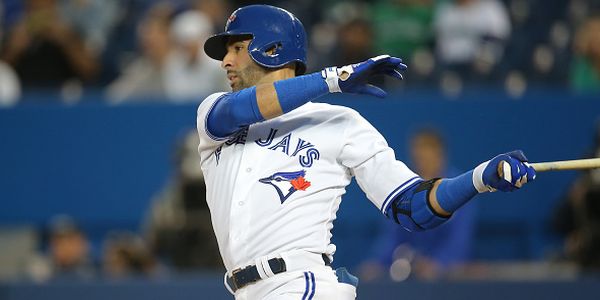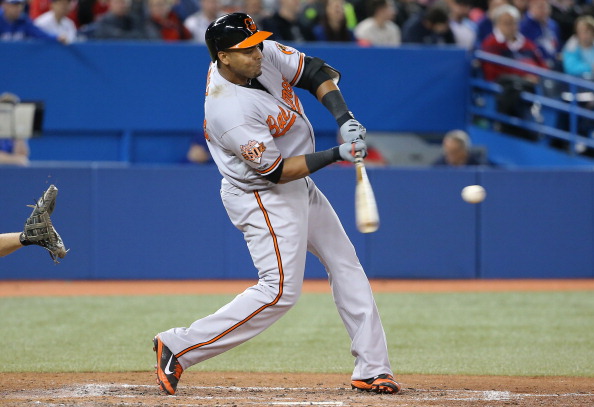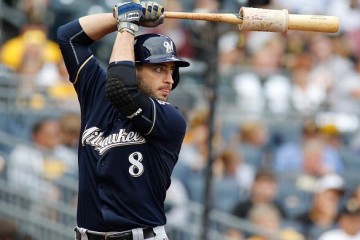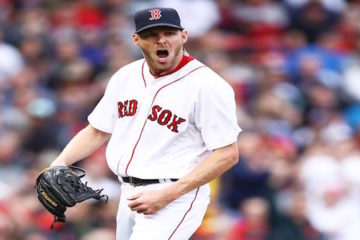2015 Fantasy Baseball: Plate Discipline — Right Fielders

We’ve come to the end of our plate discipline series. Usually, when these things happen we want to pause for a moment and take a look at all the ground we’ve covered. So, to start we will look at each position as a whole to see if we notice any trends. From there, we are in a much better position to look at each player individually.
| SO% | BB% | SO/BB | Oswing | Contact | SwStr | |
| Catcher | 18.0 | 9.1 | 1.98 | 28.1 | 80.1 | 8.1 |
| First Base | 18.7 | 10.4 | 1.80 | 28.8 | 78.2 | 9.5 |
| Second Base | 14.6 | 8.3 | 1.76 | 26.9 | 84.5 | 6.6 |
| Third Base | 17.5 | 7.8 | 2.24 | 29.7 | 80.8 | 9.0 |
| Shortstop | 14.6 | 6.8 | 2.15 | 29.9 | 84.6 | 7.0 |
| Left Field | 20.8 | 8.4 | 2.48 | 27.7 | 78.5 | 9.7 |
| Center Field | 19.3 | 7.6 | 2.54 | 27.2 | 80.5 | 8.1 |
| Right Field | 19.5 | 8.4 | 2.32 | 30.0 | 78.8 | 9.2 |
It’s fun to study numbers over time. The general standard for the strikeout to walk ratio throughout history has been two to one. However, there are times when hitters have dominated and times when pitchers have dominated. I would venture to guess that the numbers 10 years ago would have looked quite different. Offense was king then, but pitching has definitely taken the upper hand. That can be seen clearly in the numbers above.
Yet, with the exception of right field, the Oswing numbers have remained fairly constant no matter the position. Every other number depends on the expectations of the position. When power is expected, less contact often comes with it. That can be seen at the three most powerful positions (right field, left field, first base). This is the main reason why we use the positional median and not the overall median.
Individually, the Oswing numbers are the big key in determining where a player will go as he ages. Hand eye coordination often disappears first. Famous bad ball hitters often age poorly. Even when you look at the good ones, you still see a stark difference between their contact rate on balls in the zone and balls outside the zone. We haven’t broken it down to that level, but overall contact rates also tend to go with that Oswing rate.
Elite
| SO% | BB% | SO/BB | Oswing | Contact | SwStr | |
| Carlos Gonzalez | 22.2 | 7.8 | 2.85 | 35.3 | 74.7 | 12.1 |
| Giancarlo Stanton | 28.2 | 12.1 | 2.33 | 32.6 | 68.3 | 13.8 |
| Ryan Braun | 18.3 | 7.9 | 2.32 | 33.5 | 80.0 | 9.4 |
| Matt Kemp | 23.5 | 8.0 | 2.94 | 32.0 | 72.6 | 13.0 |
| Hunter Pence | 18.3 | 7.4 | 2.47 | 32.5 | 76.8 | 11.1 |
| Nelson Cruz | 22.0 | 7.9 | 2.78 | 29.8 | 73.4 | 12.8 |
| Jose Bautista | 18.2 | 13.8 | 1.32 | 22.2 | 80.6 | 7.5 |
| Jayson Werth | 22.7 | 12.2 | 1.86 | 22.3 | 79.1 | 8.1 |
| Median | 19.5 | 8.4 | 2.32 | 30.0 | 78.8 | 9.2 |
It’s a lot easier to look at this list and identify who I’m not worried about instead of focusing who I am worried about. Ironically, one of them is the one guy most people would question as an elite right fielder. When healthy, Jayson Werth is easily elite, but he seems to be injured at least once a season. Jose Bautista is easily elite and probably will remain elite a lot longer than the rest of these guys.
If I had to focus on one guy from the other extreme it would be Carlos Gonzalez. Anyone that has read my commentary for any length of time isn’t going to be surprised. Sometimes numbers can articulate why I don’t like a player a lot better than my words can. When you add in bad plate discipline to his injury history you can see why I avoid him in my draft every single season. I haven’t been disappointed yet.
If I had to pick a second guy it would be Stanton. Mind you, I think Stanton will always be an elite power hitter, but being an elite power hitter is not the same thing as being an elite hitter. Chris Carter is an elite power hitter, but nobody is drafting him in the first round. His contact rate and swinging strike rate is very troubling. This is especially true for a guy signed through the apocalypse for eleventy billion.
Regulars/Bench
| SO% | BB% | SO/BB | Oswing | Contact | SwStr | |
| Mark Trumbo | 24.9 | 6.3 | 3.95 | 39.6 | 72.8 | 13.8 |
| Jay Bruce | 24.7 | 9.4 | 2.63 | 30.2 | 72.9 | 12.8 |
| J.D. Martinez | 24.2 | 6.3 | 3.84 | 34.4 | 74.8 | 12.9 |
| Alex Rios | 16.1 | 5.9 | 2.73 | 27.0 | 83.9 | 7.2 |
| Kole Calhoun | 19.5 | 7.7 | 2.53 | 31.3 | 80.2 | 9.0 |
| Carlos Beltran | 16.1 | 10.3 | 1.56 | 22.8 | 82.8 | 7.3 |
| Jayson Heyward | 19.3 | 10.9 | 1.77 | 28.6 | 78.8 | 9.0 |
| Shin-Soo Choo | 21.4 | 12.0 | 1.78 | 23.8 | 76.7 | 9.9 |
| Median | 19.5 | 8.4 | 2.32 | 30.0 | 78.8 | 9.2 |
Again, we see more guys we are not worried about than guys we are. However, right field is a deep position, so we can afford to be a little more choosy. Out of the players with low Oswing rates, only Jayson Heyward looks like a guy that will be a potential regular long-term. Shin-Soo Choo was a top five right fielder as recently as the 2014 draft, but a dreadful 2014 season (and slow start this year) have left him as an afterthought in some leagues.
Carlos Beltran is a borderline Hall of Famer. He has 67.2 career WAR according to baseball-reference. If we use similarity scores on that same site, we see that five Hall of Famers show up on his top ten through age 37. Some of those players added some production after that point. So far, Beltran appears to be leaking oil. Still, he’s fourth among active players in that WAR count. Of course, no fantasy players cares about what you’ve done. They want to know what you are going to do.
Waiver Wire
| SO% | BB% | SO/BB | Oswing | Contact | SwStr | |
| Nick Markakis | 13.0 | 9.3 | 1.40 | 24.8 | 88.2 | 4.9 |
| Travis Snider | 25.0 | 8.4 | 2.98 | 30.2 | 76.3 | 11.1 |
| Shane Victorino | 12.0 | 7.4 | 1.62 | 30.2 | 87.0 | 5.6 |
| Nick Swisher | 21.8 | 12.9 | 1.69 | 20.9 | 77.0 | 9.1 |
| Andre Ethier | 17.2 | 9.6 | 1.79 | 29.5 | 81.2 | 8.7 |
| Torii Hunter | 17.9 | 6.8 | 2.63 | 30.0 | 77.1 | 11.3 |
| Michael Cuddyer | 17.9 | 8.8 | 2.03 | 29.7 | 79.5 | 9.2 |
| Josh Reddick | 19.7 | 7.9 | 2.49 | 30.7 | 81.4 | 8.9 |
| Seth Smith | 18.7 | 10.6 | 1.76 | 27.5 | 78.9 | 9.1 |
| Median | 19.5 | 8.4 | 2.32 | 30.0 | 78.8 | 9.2 |
When you add up the totals, ten right fielders had strikeout to walk ratios better than two to one. Of those ten, five can be found on the waiver wire list here. Granted, some of these guys will be on fantasy benches, but you get the idea. Playing time is often the determining factor of splitting guys between the bench and waiver wire category. Torii Hunter, Josh Reddick, and Nick Markakis can usually be counted on to play every day, but the rest are either platoon guys are guys that frequently get hurt.
If the Dodgers ever find a home for Andre Ethier, he could be an excellent mid-season addition to your fantasy team. It doesn’t hurt that he seems to be off to a good start in spite of playing only occasionally. That should help facilitate a deal at some point. If Nick Swisher ever makes it back he could be a name to track to, but there is a reason he was largely overlooked on draft day.




